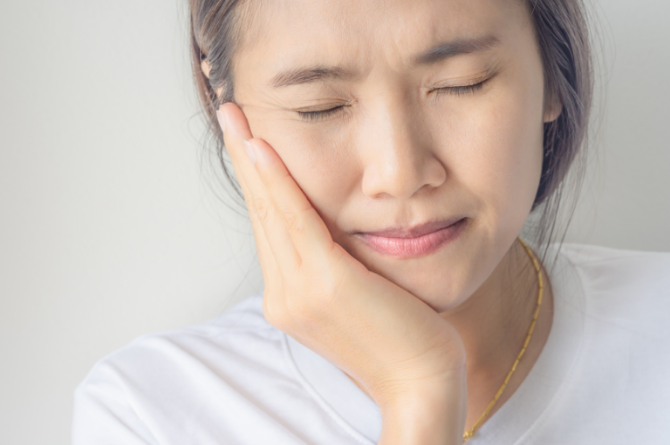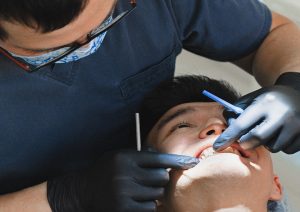Have you been experiencing jaw pain, and difficulty in chewing? The problem may not be just your teeth – you might be suffering from temporomandibular disorders (TMD). TMD is a multi-factorial problem involving the temporomandibular jaw joint, muscles of mastication and the teeth/bite.
The temporomandibular joint is a 2 joints system that connects your jawbone to your skull. There is one joint on each side of your jaw, in front of each ear. It is the only 2 joints system in the body that works as single unit to coordinate the movement of the jaw, so you can do things such as swallow, talk, chew and yawn.
So, what triggers TMD? And what are some options for TMJ treatment? Dr Loh Ee Tyug of DP Dental addresses these concerns and tells us why early diagnosis and management is important.
TMJ Treatment: Finding the Symptoms and Triggers
Some Common symptoms of TMD are:
- Pain or tenderness in your face and jaw area and in or around the ear when you chew, speak, or open your mouth wide
- Pain in one or both of the temporomandibular joints
- Locking of the joint, making it difficult to open or close your mouth
- Clicking, popping, or grating sounds in the jaw joint when you open, close your mouth or chew.
- A tired, aching feeling in your face
- Difficulty chewing, or pain while chewing. It might feel like a sudden uncomfortable bite – as if the upper and lower teeth do not fit together properly
- Swelling on the side of the face
- You may also have tender sensitive teeth, toothaches, headaches, neck & shoulder pain, earaches, hearing problems, and ringing in the ears (tinnitus).

Common triggers and causes of TMD
TMD happens when there is a mismatch between the bite, jaw joints and muscles of mastication responsible for jaw movements.
Some common causes resulting in the mismatch are:
- Non ideal upper and lower jaw relationship
- Crooked teeth
- Loss of teeth resulting in bite changes
- Muscles strained/fatigue as a results of clenching and grinding
- Trauma to the jaw joints
TMJ treatment and pain management
At DP Dental, we manage TMD with a combination of orthotic and muscles strengthening therapy .

Transcutaneous Electrical Nerve Stimulation (TENS ) device is used to relax the jaw muscle before a customised orthotic is fabricated based on data captured by sophisticated computerised jaw tracking method. Together with muscle strengthening therapy which aims to strengthen jaw oral muscles and promote proper oral habits, the orthotic treatment restores the jaw and muscles to physiologic position and relief pain.
We also manage acute TMD pain with LASER using low-level laser therapy (LLLT). LLLT involves the application of low-power laser light to allow for fast pain relief by reducing muscle inflammation. The LASER pain relief therapy is non-invasive and has no negative side-effects.
Mild TMD symptoms for eg: clicking of the jaw joints , headaches, migraine and ringing in the ears may come and go and not disrupt daily life. However, it can progress to severe TMD and cause debilitating chronic pain if left untreated.
We hope this article about TMJ treatment and pain management was useful to you. If you experience any of these TMD symptoms and need expert advice, please don’t hesitate to make an appointment with Dr. Loh Ee Tyug. Call us at 62820122 or visit our website at www.dpdental.com.sg.
Also READ: Wisdom Tooth Extraction: When it is Necessary and Post-Surgery Care




